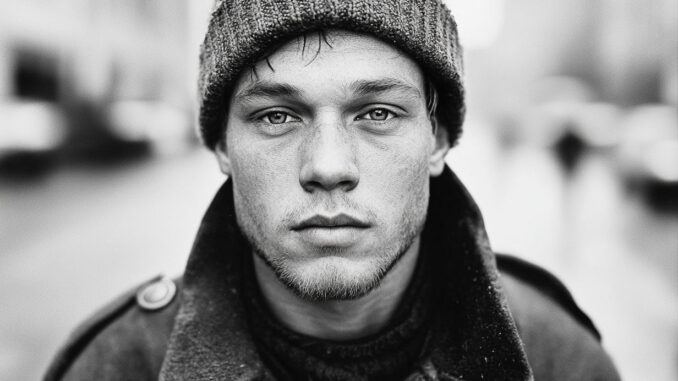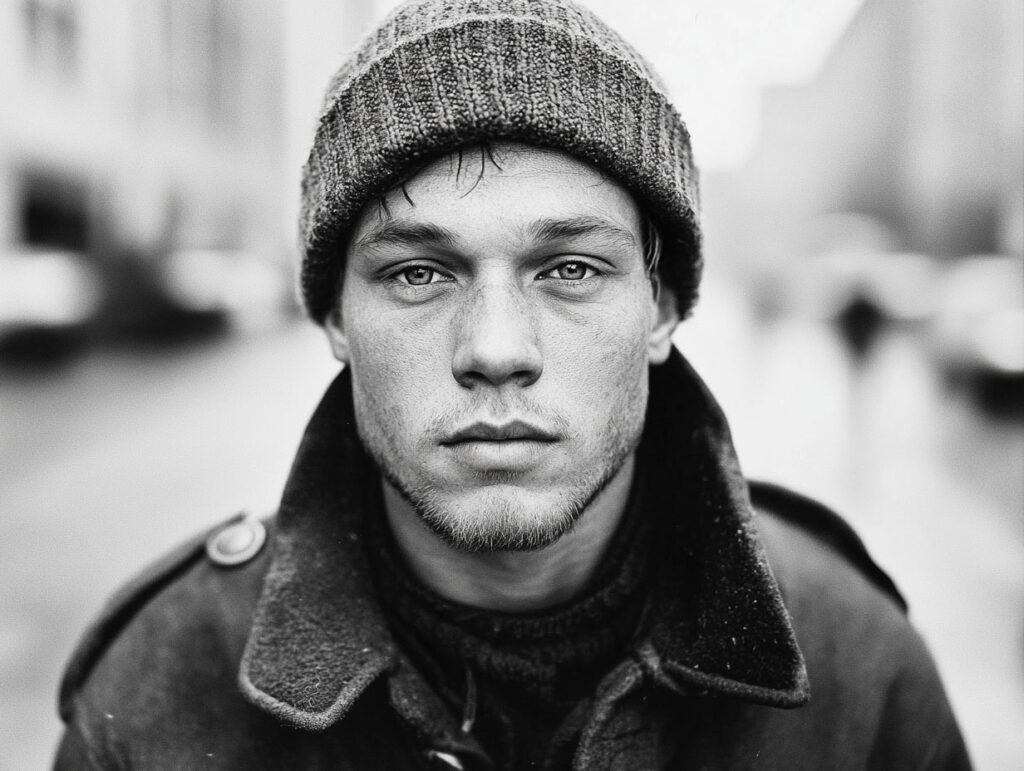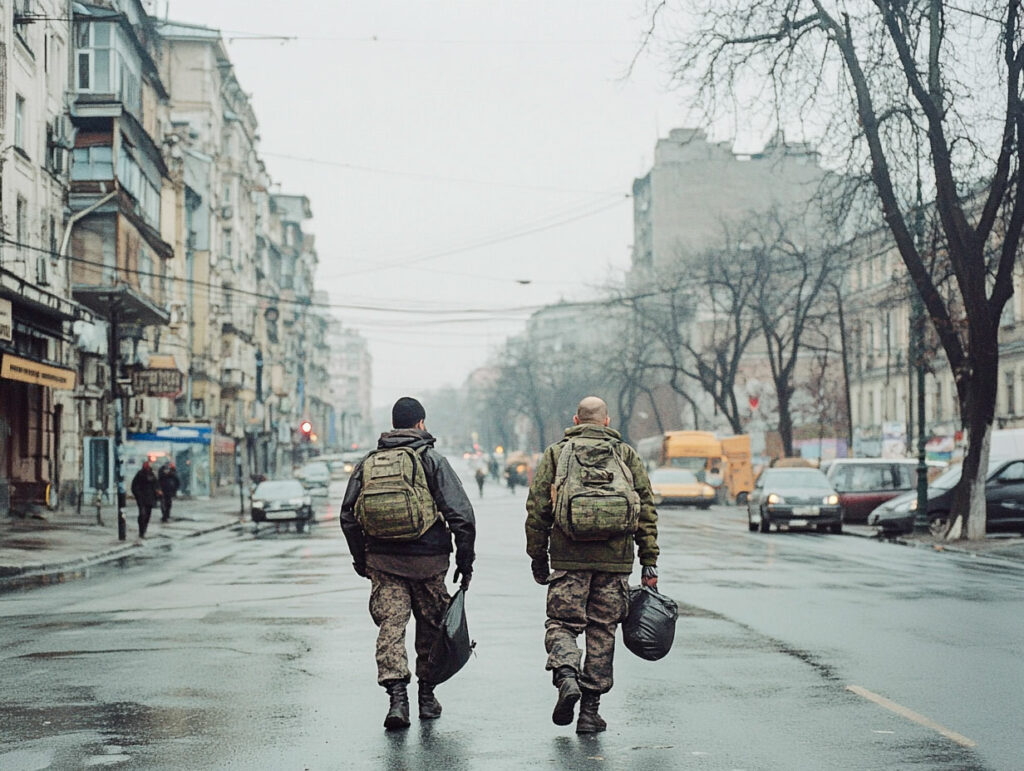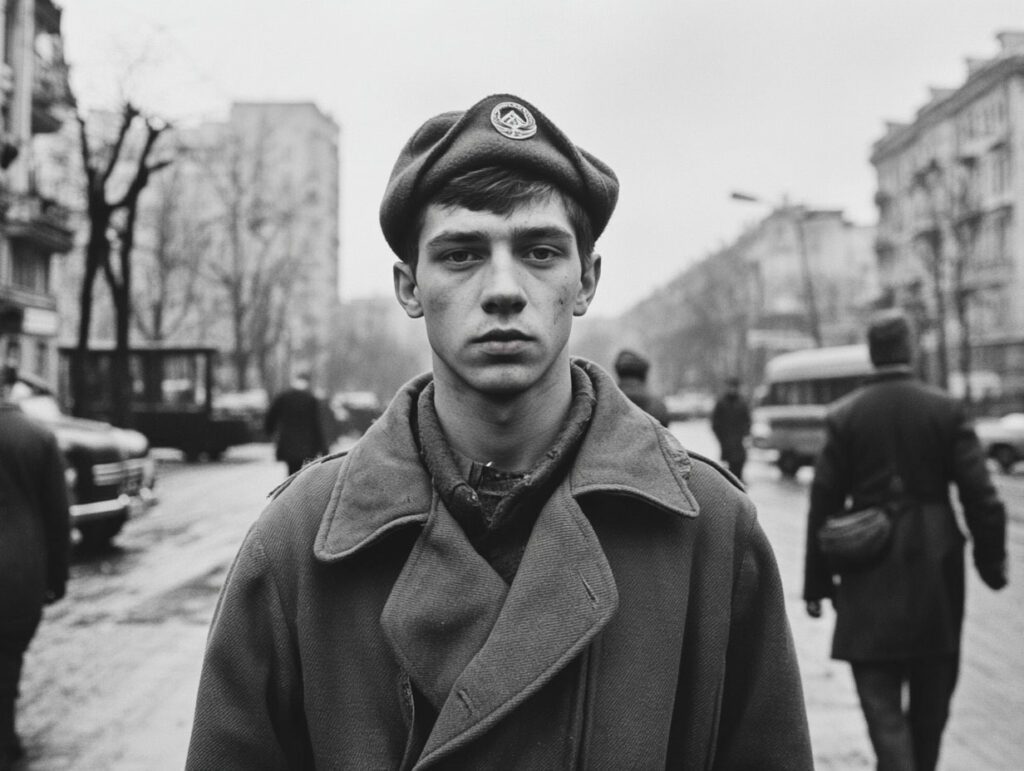
The Kremlin closely supervises Russian veterans to prevent them from mobilizing against the regime and to maintain political stability.
Since the end of 2022, the Kremlin has implemented a series of measures aimed at monitoring Russian veterans returning from the Ukrainian front. Fearing that these veterans, who are often traumatized and disillusioned, could become an opposition force, the Russian government has created state structures to supervise them. These initiatives include the State Fund “Defenders of the Fatherland”, the school “Time of Heroes” to train a new loyal elite, and veterans’ associations under government control. These measures aim to prevent a repeat of the “Afghan syndrome”, where the return of Soviet soldiers from Afghanistan led to political instability. However, despite these efforts, signs of discontent and criminality among veterans are emerging, calling into question the effectiveness of this control strategy.

The control of Russian veterans: a political strategy of the Kremlin
Since the end of 2022, the Kremlin has been engaged in a structured program of control of Russian veterans returning from Ukraine. The objective is not only to manage the human consequences of the war, but above all to neutralize any political risk linked to the creation of independent groups likely to challenge the government. The Kremlin draws on historical precedents—in particular the “Afghan syndrome”—to justify this strict control, while laying legal and administrative foundations to channel the reintegration of veterans.
Institutional mechanisms to supervise and guide
The State Fund “Defenders of the Fatherland”, inaugurated in April 2023, plays a central role. Present in all Russian federal matters, it is the only institutionalized point of access to financial, medical and social assistance for veterans. The Kremlin allocated more than 11.3 billion rubles (approximately 126 million euros) to it in January 2025 for benefits and care for the wounded. The management of the fund, entrusted to Anna Tsivileva, a close associate of the president, illustrates the strategic nature of the organization. This single channel makes it possible to filter access to resources according to criteria of loyalty to the regime, reducing the autonomy of veterans.
The creation in February 2024 of the “Time of Heroes” school, attached to the presidential administration, aims to train a new elite from the military ranks. Vladimir Putin’s speech at its launch defined veterans as the only ones legitimate to exercise responsibilities: those who “will not give up or betray”. The program selects candidates based on their loyalty, not their combat experience, favoring loyalists from rear positions or symbolic units such as “Akhmat.” According to a Novaya Gazeta investigation, more than 20% of the first-cycle students already had political or administrative positions, with little connection to the front.
The organizations “Association of SVO Veterans” and “Military Fraternity SVOi”, created at the end of 2023 and 2024, reinforce this system. By bringing together pre-existing associations – some of which had criticized the conduct of the conflict – these structures allow the state to regain control of the public discourse of veterans, while promising them employment, reintegration and recognition.
Objectives of political containment
All of these initiatives aim to nip the emergence of a structured protest movement in the bud. The post-2023 crackdown on figures such as Igor Girkin and Ivan Popov shows that the slightest public criticism of the Ministry of Defense or the Kremlin is perceived as a direct threat. By centralizing aid, training, and even the means of expression for veterans, the Kremlin is establishing a monopoly on legitimate speech. This lockdown also aims to avoid the social dynamics observed after Afghanistan, when the Afghantsi—veterans of the conflict—structured a critical civil society that contributed to the collapse of Soviet power.
The current model is not based on the integration of combatants as such, but on the political selection of docile profiles, some of whom are accused of war crimes. This strategy leaves a mass of anonymous, sometimes unstable veterans on the margins, with no clear prospects, increasing the risk of social tensions or violent excesses.
The Kremlin’s policy thus transforms the figure of the veteran into a tool for legitimizing power, while neutralizing any capacity for independent mobilization arising from this population. It is an operation of controlled militarization of society, which sacrifices genuine reintegration to the logic of authoritarian conservation.
The social consequences of the return of veterans
The gradual but massive return of Russian veterans from the Ukrainian front represents a major social issue in contemporary Russia. While more than 700,000 individuals have been directly or indirectly involved in the conflict according to Ukrainian and Western sources, the reintegration of these former combatants is generating strong tensions within the Russian social fabric, particularly due to their psychological state, their sociological profile, and the lack of adequate civilian measures.
Psychological disorders and isolation
Many veterans suffer from post-traumatic stress disorder (PTSD), severe depression or aggressive behavior. The Russian Ministry of Health has reported that in six months, 11,000 military personnel and their family members have requested psychological support. This figure, already worrying, is probably underestimated given the persistent taboo surrounding mental health in Russian military circles. By way of comparison, in the United States, nearly 20% of veterans deployed in Iraq or Afghanistan have been diagnosed with PTSD – despite much more developed support systems.
In Russia, the situation is all the more delicate because civil society has not been prepared to welcome these men. The Kremlin deliberately downplayed the scale of the conflict, presenting it as an operation involving only professionals. This narrative has created a rift between the veterans, scarred by the experience of war, and an often disengaged urban and civilian population. The result is a feeling of abandonment among the veterans and mutual distrust in their social circle.
Furthermore, the profiles of the veterans are heterogeneous. A significant proportion come from marginalized social categories. The massive use of prisoners, indebted persons, or elderly men with few civilian qualifications further complicates professional reintegration. These individuals have neither the prospect of retraining nor a structured civilian network, which reinforces their economic and psychological vulnerability.
Crime and violence
The wave of returns since 2023 coincides with a documented rise in violent crime. According to independent research published in 2023, at least 190 criminal proceedings have been brought against veterans from the Wagner militia who have been granted a presidential pardon. The offenses range from theft to murder, including domestic violence and sexual assault. In December 2023, a veteran who had fought under a Wagner contract killed two people in the Kursk region. Other cases have been reported in the Ryazan, Perm and Krasnodar oblasts, often with illegally kept weapons.
These incidents are not anecdotal. They reflect the failure to provide proper supervision for the return to civilian life. Many veterans return with a psychological conditioning to war, an acclimatization to violence, and a sense of impunity linked to their status as “defenders of the motherland”. Some of them were drafted from prisons and pardoned in exchange for six months of service at the front, which sometimes allowed them to escape long sentences for rape, murder or drug trafficking. The message sent to society is ambiguous: violence is tolerated if it is committed under the patriotic banner.
This climate is reinforced by the absence of an effective public policy. Local authorities lack the resources to monitor these former soldiers. There is no unified database that is continuously updated to monitor the return and needs of these individuals. Most of the assistance, through the “Defenders of the Fatherland” fund, is conditional on political loyalty, effectively excluding those most critical of the system or those on the margins.
Finally, as the Russian army has recruited heavily in poor rural areas or in the peripheral republics (Tuva, Dagestan, Buryatia), the effects of these returns are concentrated in certain areas, accentuating tensions in regions already weakened by unemployment, alcoholism and the exodus of young people.
All these factors point to a lasting deterioration of the social climate. If the number of unemployed veterans continues to increase, the risk of local armed gangs forming, community conflicts and social radicalization becomes tangible, especially in a deteriorated economic context. This risk is all the more real as the structures put in place by the Kremlin serve primarily political objectives, without any real therapeutic or social purpose.

The militarization of Russian society
The Kremlin is exploiting the return of veterans to consolidate a strategy of militarization of society at several levels: administrative, ideological and generational. The systematic use of the image of the loyal combatant is becoming a centerpiece of social engineering in Russia. This process does not only respond to a need for recognition of former soldiers, but also participates in an authoritarian restructuring of institutions and civic values around the cult of war.
The making of a military-political elite
The establishment in February 2024 of the “Time of Heroes” school is a turning point in the creation of an elite drawn directly from the military ranks. This institution, supported by the presidential administration, offers veterans – or at least those deemed politically reliable – accelerated training in public management, administration and political communication. Vladimir Putin’s stated objective is clear: to bring about the emergence of a new ruling class from the battlefield, perceived as more loyal, more disciplined, and more “patriotic” than the executives of the 1990s.
In reality, the selection criteria seem to be based more on loyalty than on actual combat experience. According to research conducted by Novaya Gazeta, more than 20% of the members of the first class of “Time of Heroes” have never directly participated in military operations. They often come from the administration, internal security forces or rear units such as BARS “Kaskad” or the “Akhmat” forces in Chechnya. The integration of these profiles indicates that the Kremlin favors bureaucratic loyalty over combatant legitimacy, thus consolidating a system of vertical co-optation.
These new executives are then appointed to key posts: regional governors, youth leaders, executives of the presidential party United Russia. They become the vectors of a war ideology integrated into the functioning of the state. The program is also presented as a path of social advancement, conditioned by military engagement, creating an additional incentive to engage or justify military action to the population.
Militarization of youth and ideological indoctrination
At the same time, the Kremlin is seeking to integrate veterans into the education of younger generations, mainly through structures such as the Yunarmiya movement (Young Army Cadets). Created in 2016 but relaunched in 2024 in the context of war, this movement now receives direct support from several veterans from the “Time of Heroes” program, such as Artur Orlov and Vladislav Golovin. The latter was appointed chief of staff of Yunarmiya at the end of 2024.
The role of these veterans is not limited to a symbolic function. They are actively involved in the redesign of school curricula and extracurricular activities, introducing modules on “military preparedness”, “patriotic culture” and “civic resilience” in public schools. The aim is to instill from an early age a worldview based on armed defense, sacrifice and distrust of foreign powers, particularly NATO member countries. The language used in textbooks and official ceremonies tends to normalize the state of war, promoting heroism and military discipline as fundamental civic benchmarks.
This militaristic orientation is also encouraged in the occupied areas of Ukraine, where the Russian educational program is imposed on Ukrainian children with the help of Russian veterans. The objective is to extend this ideological matrix beyond the borders of the Russian Federation, in a logic of forced assimilation and preventive conditioning to military authority.
Towards a society structured around war
This dual process – the elitization of veterans and the indoctrination of youth – allows the Kremlin to frame the national narrative around the war in Ukraine, to legitimize sacrifices and to justify the perpetuation of the conflict. By relying on military figures promoted as models of success, the regime promotes a vision of society where merit is defined by loyalty to power and the ability to fight, not by technical or civic skills. This contributes to the disintegration of liberal norms of citizenship in favor of an authoritarian culture based on military hierarchy and political loyalty.
This choice of society will have profound long-term consequences: an imbalance in public recruitment, an authoritarian shift in institutions, ideological polarization, and a deterioration of educational independence. It permanently establishes war as a central vector of political and social organization, making a return to a pluralistic and peaceful society all the more difficult.

Future prospects and implications
The Kremlin’s strategy of strict supervision of veterans is designed to protect the regime from internal opposition, but it carries major political and social risks in the medium and long term. By imposing centralized supervision, restricting the autonomy of associations, and making public aid conditional on loyalty, the Russian government is creating lasting tensions in society and paving the way for unpredictable forms of radicalization, including within the groups it claims to control.
Risks of radicalization and internal fragmentation
Despite the control measures put in place since the end of 2022, discontent among veterans has not disappeared. Several figures from the armed forces or paramilitary circles have publicly expressed their disagreement with the military strategy or the way in which veterans are treated. Among them, Igor Girkin (Strelkov) – a former FSB officer and central figure in the annexation of Crimea – created the “Club of Angry Patriots” in 2023, a group explicitly critical of the Kremlin. This circle brings together veterans from Crimea, Donbass and Syria, often marginalized by the new structures loyal to Putin.
The structural problem stems from the fact that the Kremlin has used veterans as political instruments but has not given them any real autonomy. By preventing them from expressing specific demands or organizing themselves outside of official structures, the regime has created a feeling of betrayal and uselessness. Many veterans – especially those from irregular formations such as Wagner or the republican units of Donbass – do not receive the same compensation or the promised recognition. Some, in rural areas or on the outskirts of the Russian empire, feel abandoned and humiliated.
The predictable consequence is the formation of informal networks, increasingly politicized, escaping central control. They can either tip over into anti-elite ultranationalism or into armed opposition, as Yevgeny Prigozhin’s attempted mutiny in June 2023 partially showed. The fact that the latter was able to temporarily gather more than 10,000 men shows that a hard core of fighters remains mobilizable outside of official channels, which constitutes a risk of partial or localized rebellion.
Lasting erosion of civil society
The lockdown of public space does not only affect veterans: the strict control exercised over all forms of association grouping reinforces systemic authoritarianism. By forcibly integrating historically independent groups – such as the Union of Russian Officers – into state structures, the Kremlin is destroying the mechanisms of intermediation between the population and the authorities. This phenomenon prevents the emergence of a structured debate on war, internal security or the retraining of military personnel.
In this context, NGOs, civil associations or informal psychological support initiatives are marginalized or banned. In 2024, several Russian humanitarian organizations were forced to close after being accused of “discrediting the army” for documenting the suffering of veterans or holding the Ministry of Defense to account. The voluntary sector is therefore now closely dependent on the executive power, depriving society of a crucial tool for social regulation.
The impact on the younger generations is also significant. By channeling the memory of war and imposing a single narrative of heroism and loyalty, the Kremlin is preventing the construction of an autonomous political culture capable of debating the use of force, the role of the army in democracy, or the place of veterans in civilian life.
This context, combined with a stagnating economy and declining demographics, is preparing a closed but fragile society, exposed to violent political shocks. Eventually, the Kremlin could find itself facing a generation of frustrated, armed, marginalized veterans—with no other prospects than open opposition or violent radicalization. The longer the government delays a real reintegration policy, the greater the risk of an uncontrolled explosion of the crisis.
Thus, far from guaranteeing stability, the current strategy is creating the conditions for future internal destabilization, not through the action of the liberal opposition – which is marginalized – but through the backlash of an armed and disillusioned base that the regime seeks to exploit without ever giving it a real role.
War Wings Daily is an independant magazine.